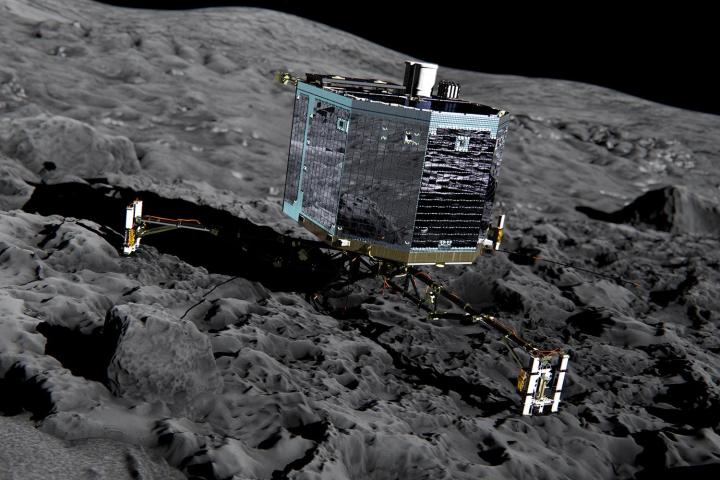
With temperatures rapidly falling on Comet 67P, DLR’s last ditch attempt also utilized the Rosetta spacecraft of which it sent a blind command to the Philae lander to attempt to start its momentum wheel. During Philae’s original attempt at landing on the comet in November of 2014, the momentum wheel was used to guarantee the probe’s stability. Since it bounced around during the landing and finally rested in a particularly inopportune position, the DLR believe this same wheel now has the ability to dramatically shift Philae’s current position.
“At best, the spacecraft might shake dust from its solar panels and better align itself with the Sun,” Philae’s technical manager Koen Geurts explains.

Clearly, the emphasis is placed squarely on at best considering little is known of the actual state of the probe since it briefly checked in with Earth last June and July. Unfortunately, members of the DLR team strongly believe that at least one of Philae’s two transmitters, as well as one of its two receivers, have since failed. Because of this, the other receiver and transmitter are, according to DLR, unable to continue to “function smoothly.” Moreover, while scientists hope the lander isn’t completely gone for good, they acknowledge its perch on a comet puts it in a precarious position, susceptible to dust and gas.
“Time is running out, so we want to explore all possibilities,” says Philae lander manager Stephan Ulamac. “Unfortunately, Philae’s silence does not bode well.”

Once the month of January ends, it’s reported that Comet 67P will be more than 186.4 million miles away from the Sun. Additionally, this massive distance from the sun will result in an operating temperature of roughly -60 degrees Fahrenheit, thus making it practically impossible for Philae to ever have the ability to turn on again. Despite all signs pointing to a bleak and frigid demise for Philae, the Philae crew on Earth intends to keep Rosetta’s communication unit turned on beyond January.
Unless Rosetta’s cameras catch a miraculous cloud of dust, the DLR and European Space Agency will likely have to be patient until summer to get another crack at what’s going on with Philae. At this time, Rosetta’s orbit will bring the spacecraft close enough for it to capture the best photos of the comet’s surface to date. Not only does the prospect of high-resolution photos give scientists the ability to check in on Philae, but it allows them to learn even more about Comet 67P than ever before.


